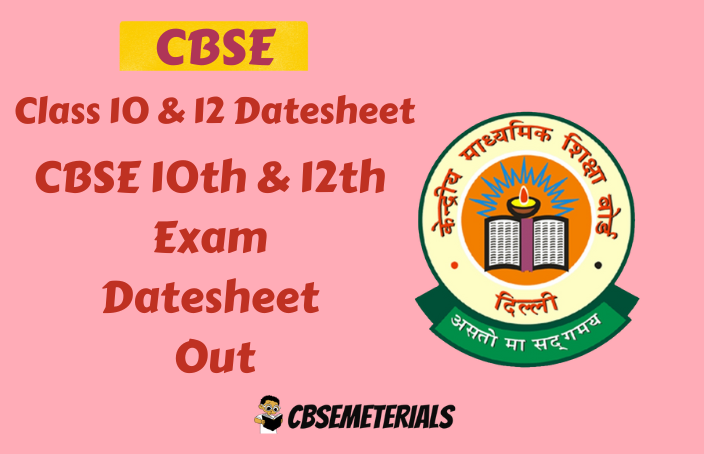Hello Guys My Name is Ayan From CBSEMeterials – Free CBSE Study Meterials and Today I am going to share Print Culture and the Modern World Class 10 History Notes For Free Which Helps you in Getting Good Marks in CBSE Class 10 History Chapter 5 Summary. You can also download Print Culture and the Modern World Class 10 History Notes PDF For Free of Cost.
Contents
hide
TOPIC – 1
Print Culture and the Modern World
Quick Review
- China, Japan, and Korea invented the earliest print technology. This system of hand printing was used.
- By rubbing paper against the inked surface of wooden blocks, books were printed in China. The main country to generate printed materials was China.
- The talented artisans were able to accurately replicate the distinctive calligraphy writing style.
- Shanghai served as the epicentre of the new print era.
- The Buddhist “Diamond Sutra” was published in Japan for the first time in AD 868.
- Poetry and prose were regularly published in mediaeval Japan, and there were plenty and affordable books to be found.
- Edo’s illustrated art collections from the late 18th century portrayed a cosmopolitan metropolitan aristocracy.
- The Silk Road was a centuries-old trade route that allowed spices and silk from China to reach Europe.
- Chinese paper travelled the Silk Road to Europe in the eleventh century.
- Johann Gutenberg created the first printing press in the 1430s in Strasbourg, Germany.
- The Bible was the first book printed by Gutenberg.
- This book was printed 180 times over the course of three years.
- Printed books initially had many visual and organisational characteristics with written manuscripts.
- Luxury versions, intended for aristocratic circles, were still handwritten on extremely expensive “Vellum.”
- The print revolution drastically altered people’s lives.
- Martin Luther, a Christian reformer, criticised the Catholic Church in his “Ninety-Five Theses” in 1517.
- The Reformation’s new ideals were spread more widely thanks to printing.
- The Roman Catholic Church established strict regulations on book merchants and publishers.
- Penny chapbooks were sold for one penny by small-time peddlers called chapmen in England.
- Small chapbooks known as the “Biliotheque Bleue” were inexpensively priced in France.
- News on international trade, as well as information about wars, was reported in periodicals, newspapers, and journals.
- Scientists like Isaac Newton, Thomas Paine, Voltaire, and Jean-Jacques Rousseau had their ideas and writings printed and read.
- The diffusion of ideas was aided by printing, which led to the French Revolution.
- Since the late 19th century, when primary education became required, children have been a significant group of readers.
- In France, a children’s press that specialised in children’s literature was founded in 1857.
- Penny magazines were created with women in mind.
- The Bronte Sisters, George Eliot, and Jane Austen were the most well-known novelists.
- In the 19th century, libraries in England were used as teaching tools for manufacturing workers, artisans, and members of the lower middle class.
- Working class individuals with self-education created autobiographies and political pamphlets.
- The press was eventually built of metal by the late 18th century.
- The power driven cylindrical press, which could print 8,000 sheets per hour, was created by New Yorker Richard M. Hoe. Newspapers were printed using this press.
- The offset press was created in the latter part of the 19th century.
- Publishers released inexpensive paperback copies in the 1930s.
- Publishers and printers are constantly coming up with new ways to market their goods. Popular works were sold cheaply in series during the 1920s in England, known as the Shilling series.
Work, Life And Leisure Class 10 History Notes
- [Part 1] Work, Life And Leisure Class 10 History Notes
- [Part 2] Work, Life And Leisure Class 10 History Notes
Flowchart of Print Culture and the Modern World Class 10 History Notes

Important Terms
- Calligraphy : Calligraphy is a lovely and elegant writing technique.
- Diamond sutra : The earliest Japanese book, the Diamond Sutra, was printed in 868 AD and has six sheets of text and woodcut pictures.
- Compositor : The person who writes the text for printing is known as a “compositor.”
- Despotism : Despotism is a kind of government in which one person has unchecked, absolute control over all other members of society.
- Almanac : An annual periodical known as an almanack provided astronomical data, details on the motions of the sun and moon, the times of full tides and eclipses, and much more information relevant to people’s daily lives.
- Denominations : Denominations: Religiously affiliated sub-groups.
- Anthology : An anthology is a compilation of poetry, stories, etc., created by various authors and published as a single work.
- Galley : Text is composed and placed down in a metal frame.
- Chapbooks : Small volumes that were widely used throughout the print revolution in the 16th century.
- Taverns : Locations where people congregated to consume alcoholic beverages, eat, meet friends, and share news.
- Protestastant Reformation : a movement aimed at reforming the Catholic Church.
- Lithography : The act of printing from a smooth surface, such as a metal plate, that has been specially prepared so that the ink only adheres to the print job’s design.
- Revolution : cause a major transformation.
- Ulama : Islamic and Sharia law experts (a body of Islamic law).
- Vellum : a parchment created from animal skin.
- New Testament : The second section of the Bible, which details Jesus Christ’s life and teachings
- Scribes : skilled manuscript hand writers.
- Platen : A platen is a board that is placed against the back of the paper during letter press printing to create the type imprint. It was originally a wooden board and was later constructed of steel.
- Parchament : Goat or sheep skin that has been specifically prepared for writing, drawing, etc.
The Age of Industrialization Class 10 Notes
- [Part 1] The Age of Industrialization Class 10 Notes
- [Part 2] The Age of Industrialization Class 10 Notes
Important Dates
- 594 A.D. : In China, books were printed by rubbing paper against the woodblocks’ inked surface.
- 768-770 A.D. : In Japan, hand printing technology was first used.
- 868 A.D. : The Diamond Sutra, the first book published in Japan, was released.
- 11th Century : Paper travelled from China to Europe.
- 1295 A.D. : From China, Marco Polo brought the knowledge of using woodblocks to create books to Europe.
- 1448 A.D. : Printing press invention credited to Johann Gutenberg.
- 1450-1550 A.D. : Most European nations have installed printing presses.
- 1517 A.D. : The “Protestant Reformation” was launched when religious reformer Martin Luther published his “Ninety-Five Theses” which attacked numerous customs and rites of the Roman Catholic Church.
- 1558 A.D. : The Roman Church started keeping a list of forbidden books.
Print Culture and the Modern World Class 10 History Notes PDF
TOPIC – 2
The Growth of Press in 19th Century India
Quick Review of Print Culture and the Modern World Class 10 History Notes
- India had a very long and rich heritage of handwritten manuscripts in many different vernacular languages as well as in Sanskrit, Arabic, and Persian.
- Manuscripts were copied in India on handmade paper and palm leaves.
- Dutch missionaries printed 32 Tamil texts around 1710.
- James August Hickey took over as editor of the weekly periodical “Bengal Gazette” in 1780.
- Many newspapers and journals began printing around the end of the 18th century.
- There were heated discussions on current theological issues at the beginning of the 19th century.
- While some groups supported reforms, others opposed them.
- There were many heated debates at this period over social and religious reforms.
- Concerning practises like widow immolation, monotheism, the Brahmanical priesthood, and idolatry, the reformers were primarily concerned with the Hindu orthodoxy.
- Numerous journals, including “Sambad Kaumudi” (1821; Ram Mohan Roy), “Samachar Chandrika” (1822; Hindu Orthodoxy), “Jam-i-Jahan Nama” (1822; Persian newspaper), and “Shamsul Akbar” (1822; Persian newspaper), focused on this issue.
- The “Ulama” in North India used lithographic presses, produced Holy Scriptures in Persian and Urdu, and printed religious periodicals and pamphlets to preach their faith.
- Deoband Seminary was established in 1867 and has since produced thousands of “Fatwas” that explain Islamic concepts and the Muslim code of behaviour.
- Particularly in the vernacular languages, print increased the reading of religious texts.
- In 1810, Calcutta published the Ramcharitmanas first printed version.
- Numerous religious books in vernacular languages were published by the Shri Venkateshwar Press in Bombay and the Naval Kishore Press in Lucknow.
- End of the 19th century saw the beginning of a new visual culture.
- Images for widespread distribution were created by painters like Raja Ravi Verma.
- The market had plenty of inexpensive prints and calendars.
- Caricatures and cartoons started appearing in journals and newspapers in the 1870s.
- Few Bengali women around 1860 authored novels highlighting the experiences of women, but Kailashbashini Debi was one of them.
- In the 1870s, Hindi printing first appeared.
- Folk literature began to be published in Punjab in the early 20th century.
- Bengal’s Battala was devoted to publishing best-selling books; vendors delivered the Battala publications to homes so that women could read for leisure.
- Early in the 20th century, public libraries were established.
- Numerous well-read journals were produced by local protest movements.
- The perception of press freedom shifted with the uprising of 1857.
- The Vernacular Press Act was passed in 1878.
- Bal Gangadhar Tilak wrote about the Punjab revolution sympathetically in his “Kesari” in 1907. He was imprisoned as a result of this in 1908.
Work, Life And Leisure Class 10 History Notes
- [Part 1] Work, Life And Leisure Class 10 History Notes
- [Part 2] Work, Life And Leisure Class 10 History Notes
Flowchart of Print Culture and the Modern World Class 10 History Notes
![Print Culture and the Modern World Class 10 History Notes | Class 10 History Chapter 7 Notes 2 [Part 2] Print Culture and the Modern World Class 10 History Notes | Print Culture and the Modern World Class 10 History Notes PDF](https://wnqc9ylvi4dq.cdn.shift8web.com/wp-content/uploads/2022/11/Screenshot_4.png)
Important Terms of Print Culture and the Modern World Class 10 History Notes
- Manuscript: book or handwritten document. The handwritten or typed, but unprinted, author’s original copy can also be used to describe it.
- Ballad: A folktale or historical account told in verse that is typically sung or repeated.
- Autobiography: A memoir that the author has written about their own lives.
- Inquisition: A court used by the Roman Catholic Church in the past to discover and punish heretics.
- Heretical: Beliefs that contradict the Church’s official doctrines.
- Satiety: a level of fulfilment that goes well beyond simple satisfaction.
- Fatwa: A statement of Islamic law intended to explain matters when the law is ambiguous and is typically made by a mufti (legal scholar).
- Seditions: Anything you do, say, or write that is anti-government.
Important Dates of Print Culture and the Modern World Class 10 History Notes
- 1822: There were two Persian newspapers published: Jam-i-Jahan Nama and Shamsul Akbar.
- 1843: Richard Hoe created the first rotary printing press that used steam power and could print newspapers.
- 1878: In India, the Vernacular Press Act was adopted.
- 1880s: Writing on the wretched lives of upper-caste Hindu women, particularly widows, Tarabai Shinde and Pandita Ramabai.
- 1926: Begum Educationist and author Rokeya Sakhawat Hossein vehemently criticised men for preventing women from pursuing higher education.
Conclusion
Thank You for Reading Print Culture and the Modern World Class 10 History Notes. I Hope the Chapter Print Culture and the Modern World Class 10 History Notes PDF Solution Created by Cbsemeterials.com Team May Found Helpful for Your Class 10 Exam Preparation. If Found Any Error or Suggestion Please to Let Us Know in Comment Below



